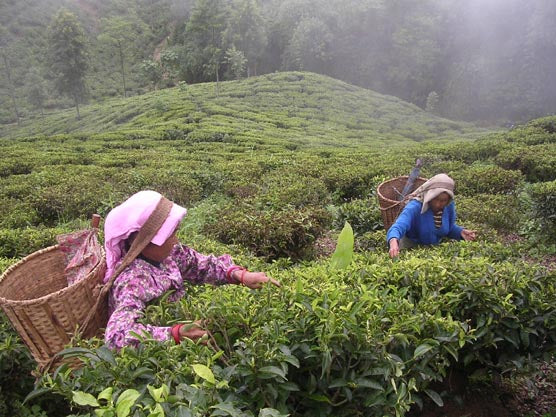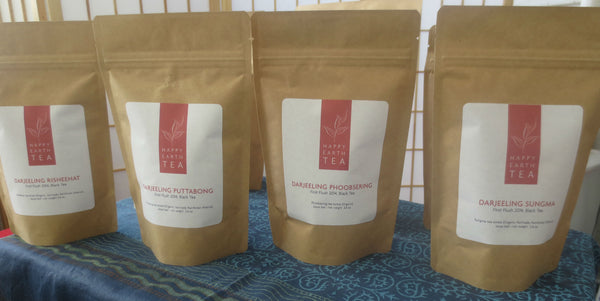
Darjeeling Tea Gardens
The names of our Darjeeling teas actually include the tea garden from where they were grown and manufactured. This is the historic way of identifying and authenticating these magnificent teas. Arya, Puttabong, Phoobsering, Singbulli, Sungma, Turzum, etc, exotic and hard to pronounce tea gardens have worked diligently to build their reputations of producing some of the world's best teas. When the garden is identified you are buying into their long standing reputation for excellence and high tea manufacturing standards. Because it takes many years to build a good reputation, tea gardens work extremely hard to maintain the highest standards and protect their brand.

There are around 80 tea gardens in Darjeeling. Each tea garden, which can also be called a “tea estate” or “tea plantation”, is a fairly major affair. A tea garden can be anywhere in size from around 300 acres to 1300 acres with hundreds of workers and their families residing within the garden. The actual resident population of a tea garden runs into thousands of people including children.
Many of the tea garden names are rooted in the languages of the region - Nepali, Lepcha and Bhutia. While Nepali is derived from Sanskrit, Lepcha is a language of an indigenous tribe and Bhutia has Tibetan roots.
We use the name of the tea garden for authenticity and to let our customers know the exact origin of the tea. Also many Darjeeling drinkers develop a preference for one tea garden over another. Not that one is better than the other, but each garden produces tea with unique characteristics. Some gardens face East and get more rain or more sun which influences the character of the tea. It is simply a matter of personal taste such as preferring First Flush over Second Flush or vice verse.

Our selection of tea gardens is limited to only those that have USDA-accredited Organic certification, located in higher elevations, and have a positive reputation for the well being of their workers.
List of Darjeeling tea gardens spread over seven "tea districts" or valleys.
|
Darjeeling (East) Arya (Organic) |
Darjeeling (West) Badamtam |
|
Kurseong (North) Ambootia (Organic) |
Kurseong (South) |
|
Mirik |
Rungbong Avongrove Chamong (Organic) Dhajea (Organic) Nagri Nagri Farm (Organic) Selimbong Sungma (Organic) Turzum (Organic) Teesta Valley Tukdah (Organic) Upper Fagu |
|
Teesta |

